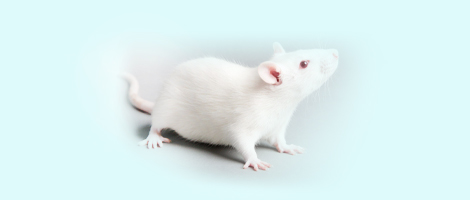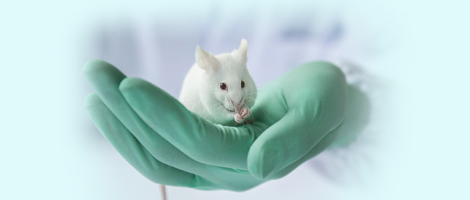| 1 |
KINTER L B, DEHAVEN R, JOHNSON D K, et al. A brief history of use of animals in biomedical research and perspective on non-animal alternatives[J]. ILAR J, 2021, 62(1-2):7-16. DOI: 10.1093/ilar/ilab020 .
|
| 2 |
高晗, 钟蓓. 转基因技术和转基因动物的发展与应用[J]. 现代畜牧科技, 2020(6):1-4, 18. DOI: 10.19369/j.cnki.2095-9737.2020.06.001 .
|
|
GAO H, ZHONG B. The development and application of transgenic technology and transgenic animals[J]. Mod Anim Husb Sci Technol, 2020(6):1-4, 18. DOI: 10.19369/j.cnki.2095-9737.2020.06.001 .
|
| 3 |
LIU W, PAN H F, WANG Q, et al. The application of transgenic and gene knockout mice in the study of gastric precancerous lesions[J]. Pathol Res Pract, 2018, 214(12):1929-1939. DOI: 10.1016/j.prp.2018.10.022 .
|
| 4 |
CAMPBELL K M, XU Y D, PATEL C, et al. Loss of TDP-43 in male germ cells causes meiotic failure and impairs fertility in mice[J]. J Biol Chem, 2021, 297(5):101231. DOI: 10.1016/j.jbc.2021.101231 .
|
| 5 |
刘庆玲, 赵振军, 徐文秀, 等. AKR7A5基因敲除对雄性小鼠生殖的影响[J]. 烟台大学学报(自然科学与工程版), 2024, 37(1):102-106. DOI: 10.13951/j.cnki.37-1213/n.220634 .
|
|
LIU Q L, ZHAO Z J, XU W X, et al. Effects of AKR7A5 gene knockout on reproduction of male mouse[J]. J Yantai Univ Nat Sci Eng Ed, 2024, 37(1):102-106. DOI: 10.13951/j.cnki.37-1213/n.220634 .
|
| 6 |
孙晓梅, 李名聪, 李涛, 等. LSS基因功能缺失对雄性小鼠生殖的影响[J]. 安徽医科大学学报, 2022, 57(2):208-212. DOI: 10.19405/j.cnki.issn1000-1492.2022.02.009 .
|
|
SUN X M, LI M C, LI T, et al. The effects of knockout of LSS on female mice fertility[J]. Acta Univ Med Anhui, 2022, 57(2):208-212. DOI: 10.19405/j.cnki.issn1000-1492.2022.02.009 .
|
| 7 |
龚晓娟, 马盼, 孙敏, 等. DRD1基因敲除影响雄性生育的分子机理研究[J]. 实验动物科学, 2021, 38(2):53-56, 60. DOI: 10.3969/j.issn.1006-6179.2021.02.009 .
|
|
GONG X J, MA P, SUN M, et al. Study on molecular mechanism of male mice reproduction in DRD1 knockout[J]. Lab Anim Sci, 2021, 38(2):53-56, 60. DOI: 10.3969/j.issn.1006-6179.2021.02.009 .
|
| 8 |
TAFT R. In vitro fertilization in mice[J]. Cold Spring Harb Protoc, 2017, 2017(11): pdb.prot094508. DOI: 10.1101/pdb.prot094508 .
|
| 9 |
MOREIRA P N, POZUETA J, PÉREZ-CRESPO M, et al. Improving the generation of genomic-type transgenic mice by ICSI[J]. Transgenic Res, 2007, 16(2):163-168. DOI: 10.1007/s11248-007-9075-1 .
|
| 10 |
LARSON M A. Embryo transfer surgery[J]. Methods Mol Biol, 2020, 2066:101-106. DOI: 10.1007/978-1-4939-9837-1_8 .
|
| 11 |
BEHRINGER R. Mouse ovary transplantation[J]. Cold Spring Harb Protoc, 2017, 2017(3):254-256. DOI: 10.1101/pdb.prot094458 .
|
| 12 |
黎桂玲, 刘科, 杨林, 等. 精子数量对小鼠体外受精与胚胎早期发育的影响[J]. 广东农业科学, 2020, 47(1):131-136. DOI: 10.16768/j.issn.1004-874X.2020.01.018 .
|
|
LI G L, LIU K, YANG L, et al. Effects of sperm counts on in vitro fertilization and early embryonic development of mice[J]. Guangdong Agric Sci, 2020, 47(1):131-136. DOI: 10.16768/j.issn.1004-874X.2020.01.018 .
|
| 13 |
王芊芊, 刘迪文, 洪胜辉, 等. 小鼠生物净化技术平台的设计、运行及维护[J]. 中国比较医学杂志, 2023, 33(8):122-126. DOI: 10.3969/j.issn.1671-7856.2023.08.016 .
|
|
WANG Q Q, LIU D W, HONG S H, et al. Design, operation, and maintenance of the technology platform of mouse rederivation[J]. Chin J Comp Med, 2023, 33(8):122-126. DOI: 10.3969/j.issn.1671-7856.2023.08.016 .
|
| 14 |
吴清洪, 顾为望, 张嘉宁, 等. SPF级C57BL/6J小鼠生长发育和繁殖性能指标的测定[J]. 中国比较医学杂志, 2006, 16(10):606-607, 614. DOI: 10.3969/j.issn.1671-7856.2006.10.009 .
|
|
WU Q H, GU W W, ZHANG J N, et al. Characterization of growth and reproductive performance in SPF C57BL/6J mice[J]. Chin J Comp Med, 2006, 16(10):606-607, 614. DOI: 10.3969/j.issn.1671-7856.2006.10.009 .
|
| 15 |
孙侠, 刘科, 杨林, 等. 6种常用SPF级大小鼠繁殖性能测定与分析[J]. 中国比较医学杂志, 2016, 26(10):9-13. DOI: 10.3969.j.issn.1671-7856.2016.10.003 .
|
|
SUN X, LIU K, YANG L, et al. Measurement and analysis of the reproductive performance in six commonly used SPF mice and rats[J]. Chin J Comp Med, 2016, 26(10):9-13. DOI: 10.3969.j.issn.1671-7856.2016.10.003 .
|
| 16 |
陆少君, 曾昭智, 张锦红, 等. 胎间隔和交配间隔时间对昆明小鼠繁殖性能的影响[J]. 动物医学进展, 2018, 39(8):74-77. DOI: 10.16437/j.cnki.1007-5038.2018.08.016 .
|
|
LU S J, ZENG Z Z, ZHANG J H, et al. Effects of fetal interval and mating interval on reproductive performance in KM mice[J]. Prog Vet Med, 2018, 39(8):74-77. DOI: 10.16437/j.cnki.1007-5038.2018.08.016 .
|
| 17 |
聂永强, 王朝霞. 濒危基因编辑小鼠品系拯救技术及其应用探讨[J]. 实验动物与比较医学, 2023, 43(6):636-640. DOI: 10.12300/j.issn.1674-5817.2023.080 .
|
|
NIE Y Q, WANG Z X. Rescue technology and its application of endangered gene-edited mice[J]. Lab Anim Comp Med, 2023, 43(6):636-640. DOI: 10.12300/j.issn.1674-5817.2023.080 .
|
| 18 |
RICHARDS J S, PANGAS S A. The ovary: basic biology and clinical implications[J]. J Clin Invest, 2010, 120(4):963-972. DOI: 10.1172/JCI41350 .
|
| 19 |
NELSON J F, BERGMAN M D, KARELUS K, et al. Aging of the hypothalamo-pituitary-ovarian axis: hormonal influences and cellular mechanisms[J]. J Steroid Biochem, 1987, 27(4-6):699-705. DOI: 10.1016/0022-4731(87)90139-7 .
|
| 20 |
郁丽丽, 刘丽均, 王俊风, 等. 同品系小鼠卵巢移植方法的建立[J]. 中国比较医学杂志, 2013, 23(7):41-43. DOI: 10.3969/j.issn.1671-7856.2013.07.010 .
|
|
YU L L, LIU L J, WANG J F, et al. Established a method of ovarian heterotopically transplantation in same strain[J]. Chin J Comp Med, 2013, 23(7):41-43. DOI: 10.3969/j.issn.1671-7856.2013.07.010 .
|
| 21 |
左琴, 王劲松, 范涛, 等. 遗传工程小鼠冻存卵巢异体原位移植比较研究[J]. 实验动物科学, 2020, 37(3):65-68, 72. DOI: 10.3969/j.issn.1006-6179.2020.03.011 .
|
|
ZUO Q, WANG J S, FAN T, et al. Study for cryopreservation and orthotopic transplantation of genetically engineering mice ovary[J]. Lab Anim Sci, 2020, 37(3):65-68, 72. DOI: 10.3969/j.issn.1006-6179.2020.03.011 .
|
| 22 |
NIIKURA Y, NIIKURA T, TILLY J L. Aged mouse ovaries possess rare premeiotic germ cells that can generate oocytes following transplantation into a young host environment[J]. Aging, 2009, 1(12):971-978. DOI: 10.18632/aging.100105 .
|
| 23 |
裴承斌, 俞晓丽, 马建军, 等. 小鼠卵巢异体不同部位无血管吻合移植后的血管重建及对促性腺激素的反应[J]. 宁夏医科大学学报, 2017, 39(6):616-620, 626, 739. DOI: 10.16050/j.cnki.issn1674-6309.2017.06.002 .
|
|
PEI C B, YU X L, MA J J, et al. Vascular remodeling and response to gonadotropin in different parts of transplantation in mice without vascular anastomosis[J]. J Ningxia Med Univ, 2017, 39(6):616-620, 626, 739. DOI: 10.16050/j.cnki.issn1674-6309.2017.06.002 .
|
| 24 |
李宇彬, 麦庆云, 李涛, 等. 去势手术方式对小鼠卵巢组织自体皮下移植效果的影响[J]. 广东医学, 2014, 35(11):1647-1649. DOI: 10.13820/j.cnki.gdyx.2014.11.005 .
|
|
LI Y B, MAI Q Y, LI T, et al. Influence of castration methods on the subcutaneous auto- transplantation of mouse ovaria[J]. Guangdong Med J, 2014, 35(11):1647-1649. DOI: 10.13820/j.cnki.gdyx.2014.11.005 .
|
| 25 |
GAVISH Z, SPECTOR I, PEER G, et al. Follicle activation is a significant and immediate cause of follicle loss after ovarian tissue transplantation[J]. J Assist Reprod Genet, 2018, 35(1):61-69. DOI: 10.1007/s10815-017-1079-z .
|
| 26 |
RONESS H, MEIROW D. FERTILITY PRESERVATION: Follicle reserve loss in ovarian tissue transplantation[J]. Reproduction, 2019, 158(5): F35-F44. DOI: 10.1530/REP-19-0097 .
|
| 27 |
李茗薇, 黄茹, 严青秀, 等. 小鼠卵巢组织冷冻保存和自体移植技术的研究[J]. 医学信息, 2024, 37(6):120-124.
|
|
LI M W, HUANG R, YAN Q X, et al. Study on the cryopreservation and autologous transplantation technique of mouse ovarian tissues[J]. J Med Inf, 2024, 37(6):120-124.
|







 ), TAO Sijue, WEI Zhen, JIN Huihui, LIU Ping, WANG Lie(
), TAO Sijue, WEI Zhen, JIN Huihui, LIU Ping, WANG Lie( )(
)( )
)